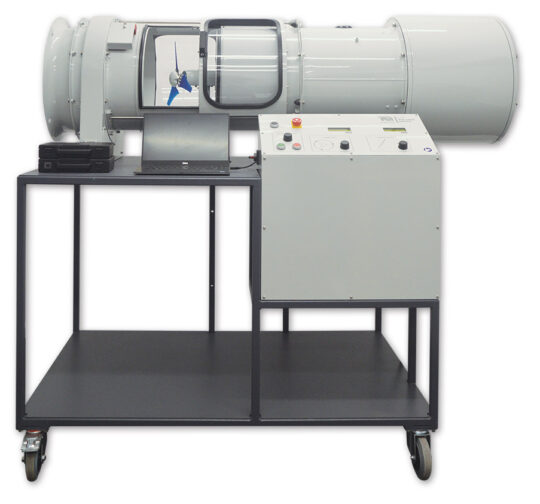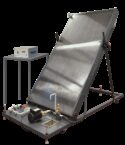Experiment
AE1005V

Wind Turbine Dynamics
This is a versatile, compact apparatus for teaching the fundamentals of kinetic wind energy conversion into electrical power. Flexibility is at the core, it has a castor-mounted frame for mobility and functionality and allows students to 3D-print their own blades for advanced experimentation.
If you have any questions or you'd like to discuss a product, please call us.
+44 1159 722 611Wind Turbine Dynamics
The wind tunnel that the turbine is mounted in has a bell mouth and honeycomb for fl ow settling on the inlet. Speed is measured by an anemometer that is stowed away when not in operation so the fl ow is not disturbed. The turbine can be viewed from both sides of the tunnel through a transparent window and a sliding door with an interlock. The turbine features motorised blade pitching and digital read-back so down time during experiments is reduced.
Attached to the base of the turbine is the yawing mechanism and the setting handle. The turbine is compatible with custom-designed 3D-printed blades built upon the hub CAD file provided by TecQuipment. A removable silencer is attached to the rear of the wind tunnel to reduce noise pollution. The silencer can be stowed beneath the apparatus to reduce space when it is stored.
The built-in safety features include an interlock on the door so that it can’t be opened while the turbine is turning and a smart shut down system that isolates power to the turbine in the event that over current or over speed is detected.
The control box has two screens for standalone operation and a VDAS® output for connecting to a PC via USB. Controls for the operation of the product are on the top panel for:
• Door open (Interlock release)
• On/off buttons
• Wind speed
• Turbine speed
• Turbine pitch
Learning outcomes
Comprehensive demonstration and investigation into the foundations of wind turbine energy conversion including:
- The relationship between turbine speed and wind velocity (TSR)
- Effect of blade pitch on turbine performance
- Effect of yaw angle on turbine performance
- Blade performance characteristics of different profiled blades
- Blade design theory









